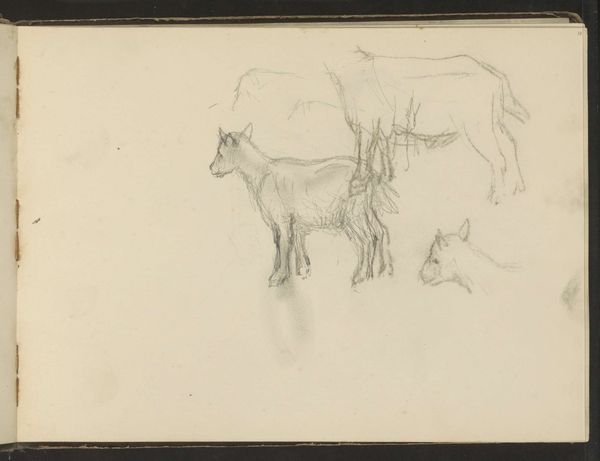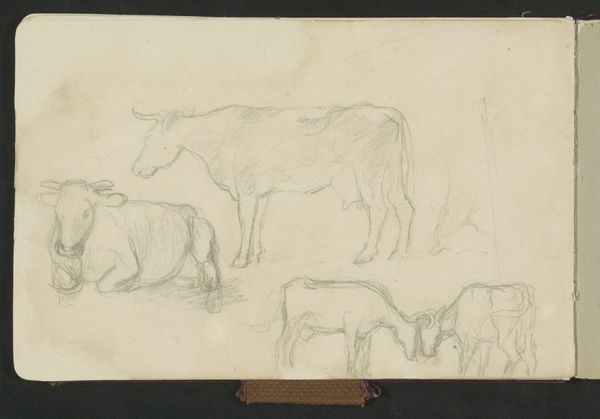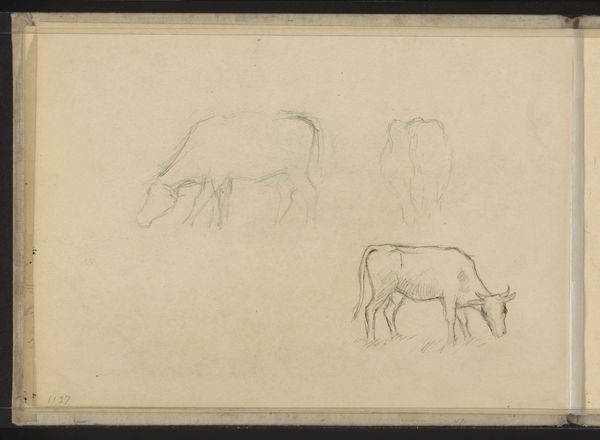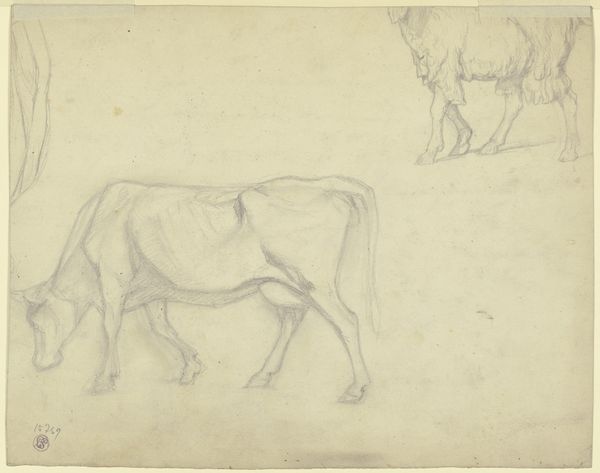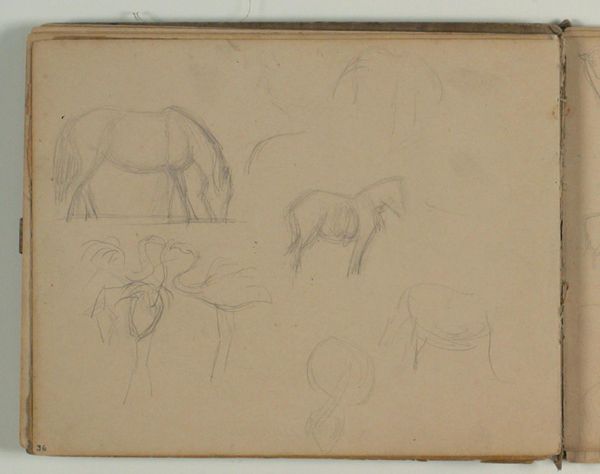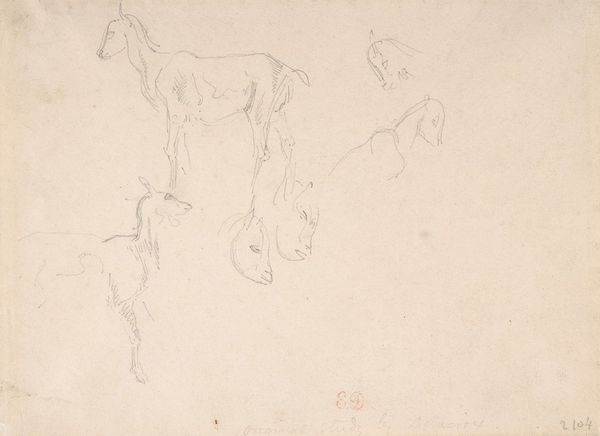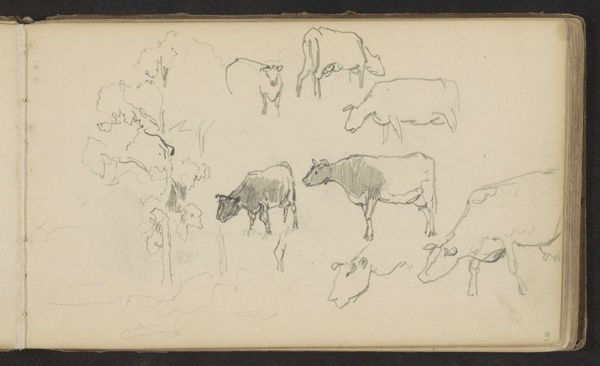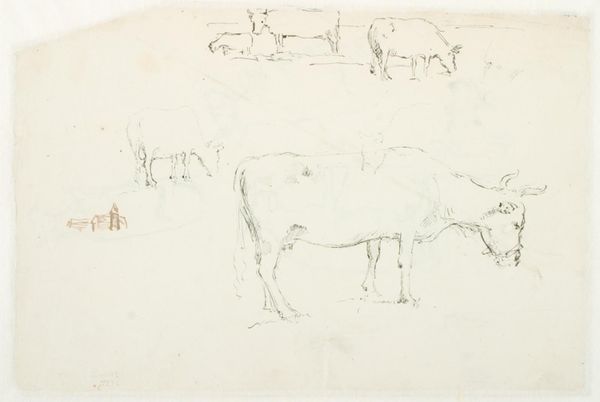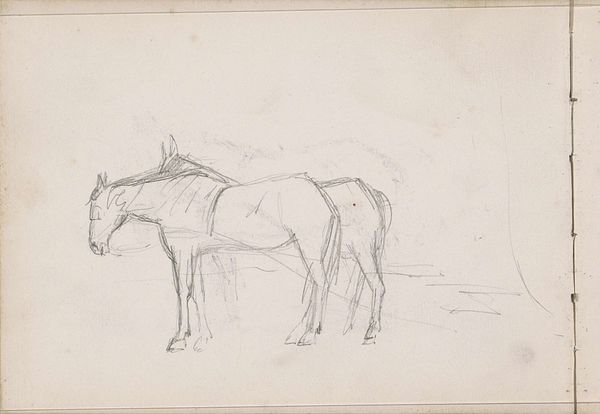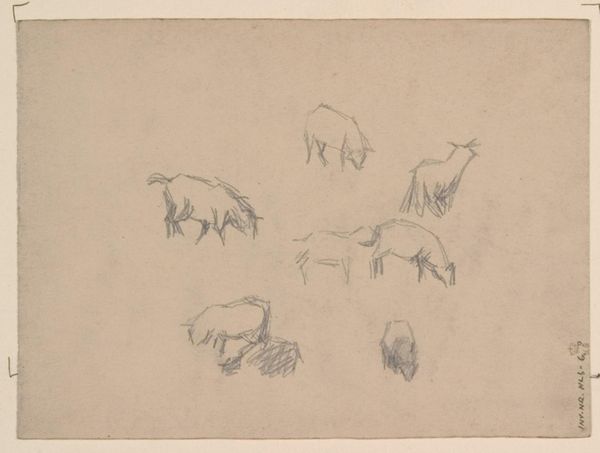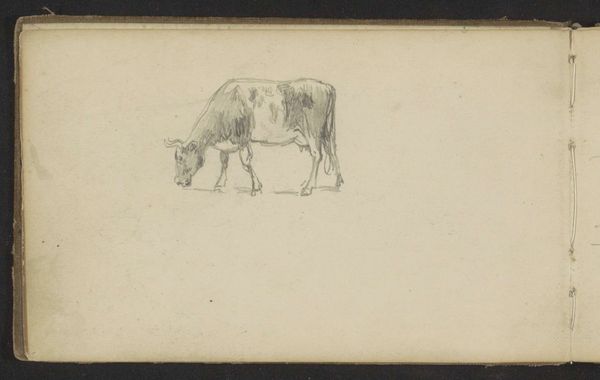
drawing, pencil
#
drawing
#
landscape
#
figuration
#
pencil
Dimensions: 113 mm (height) x 182 mm (width) (bladmaal)
Editor: We're looking at Niels Larsen Stevns' "Græssende køer," made in 1885. It's a pencil drawing of grazing cows and a figure standing nearby. The sketch feels quite raw and immediate. What strikes you about this piece? Curator: Immediately I think of the readily available and inexpensive materials Stevns used - paper and pencil. It points to an artistic process deeply rooted in the everyday, accessible materials allowing for capturing fleeting moments of rural life. It asks, how does the accessibility of art materials affect the artistic vision and what narratives get represented as a result? Editor: That’s interesting, I hadn't thought of that. So, the drawing itself almost becomes a document of material culture, in a way? Curator: Exactly! And look closer – it isn't just *any* pencil. Is the lead hard or soft? How does this specific tool enable or constrain the artist's hand, the artist's impression of cows and landscape? We must remember that even sketches tell a story about resources, labour, and choices about artistic creation in their own time. Editor: I guess focusing on that side makes this drawing representative of the resources, labor and artistic choices. I had only considered how it related to what I perceive as realism or impressionism at the time, not so much the materials that comprised it! Thanks for the perspective! Curator: Indeed! Shifting the focus onto materials and the making process, the seemingly humble drawings take a stand challenging assumptions about artistic value itself.
Comments
No comments
Be the first to comment and join the conversation on the ultimate creative platform.
